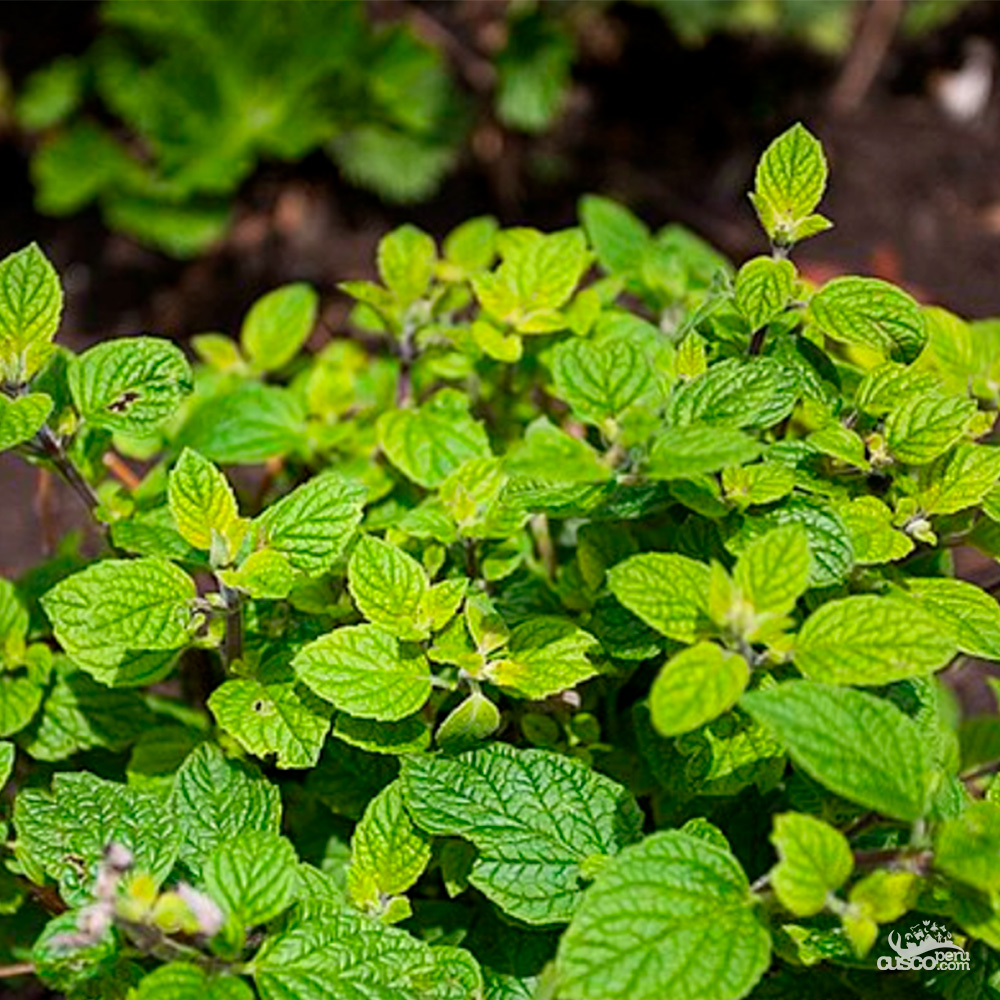Contents:
Common Names | Parts Usually Used | Plant(s) & Culture | Where Found | Medicinal Properties | Biochemical Information
Legends, Myths and Stories | Uses | Resource Links
Scientific Names

- Minthostachys mollis
- Minthostachys verticillata
- Minthostachys acris
- Minthostachys andina
- Minthostachys acutifolia
Common Names
- Muña
- Tipo
- Tipollo
- Poleo
Parts Usually Used
The leaves and flowering tops
Back to Top
Description of Plant(s) and Culture
Muña belongs to the genus Minthostachys (Benth.) Spach, which comprises 17 species of scandent aromatic shrubs belonging to the Lamiaceae family (Nepetoideae, Mentheae). These are medicinal and aromatic plants that exhibit high morphological variability. Minthostachys mollis is the most variable and widely distributed species of the genus, occurring from Venezuela to Bolivia with three varieties. The plants are characterized as aromatic shrubs with essential oil-containing leaves and flowering tops.
Back to Top
Where Found
Muña is restricted to Andean South America, ranging from Peru to Bolivia and extending from Venezuela to Bolivia in some species. The genus is found throughout the Andes mountains, with different species occurring in specific regions. Minthostachys mollis is widely distributed across the central and northern Andes, while other species like Minthostachys verticillata are found in Argentina, and Minthostachys acris occurs in southern Peru. Seven species are local endemics restricted to single Andean valleys or similarly small areas.
Back to Top
Medicinal Properties
Muña has been shown to contain significant antifungal, antimicrobial, anti-inflammatory, and insecticidal properties. Scientific studies have demonstrated its effectiveness against various pathogenic organisms, particularly fungi like Candida albicans. The plant exhibits carminative properties and has been traditionally used as an aphrodisiac in indigenous medicine.
Research has confirmed the plant’s antifungal efficacy, with essential oil concentrations showing dose-dependent activity against Candida albicans. Studies have also revealed antibacterial properties against Staphylococcus aureus and Klebsiella pneumoniae, as well as activity against other bacterial pathogens due to high monoterpene content. Additionally, some species show insecticidal activity against disease vectors, including Chagas’ disease vectors.
Back to Top
Biochemical Information
The principal components of muña essential oil include:
- Pulegone (major component, 25.5-44.6% depending on species)
- Menthone (significant component, around 24-33%)
- Menthol (approximately 20%)
- Neomenthol (up to 29% in flowering tops)
- Isomenthone (around 33% in some species)
- Piperitone (up to 8%)
- (−)-β-pinene
- (−)-α-pinene
- Limonene
- Piperic acid
- Eucalyptol
- Carvone
The plant also contains phosphorus and calcium as important mineral components. The chemical composition can vary significantly based on environmental factors such as altitude, season, and genetic variations between species and populations.
Back to Top
Legends, Myths and Stories
The common name “muña” comes from Quechua, reflecting its deep roots in indigenous Andean culture. The plant has been an integral part of traditional Andean medicine and culture for centuries, used not only medicinally but also as a condiment and in various cultural practices throughout the indigenous communities of South America.
Back to Top
Uses
Muña is used extensively in traditional Andean medicine and has multiple applications:
Traditional Medicinal Uses:
- Treatment of altitude sickness and decompensation due to changes in altitude
- Relief of flatulence and digestive disorders
- As a carminative for gastrointestinal problems
- Traditional aphrodisiac properties
- Anti-inflammatory applications
- Treatment of various infections
Methods of Preparation and Application:
- Infusions (tea preparations)
- Decoctions (boiled preparations)
- Topical rubs and applications
- Aromatherapy applications
- “Walt’aska” plasters (traditional medicinal plasters)
- Macerates (extracted preparations)
Modern Applications:
- Commercial essential oil extraction in Argentina and Peru
- Potential antifungal treatments for oral candidiasis
- Natural antimicrobial agent
- Insecticidal applications for disease vector control
- Culinary use as a condiment and tea in traditional Andean cuisine
- Conservation of potatoes (traditional use)
The plant can be used as a single component or in mixtures with other medicinal plants, with usage varying according to regional traditions and specific therapeutic needs.
Back to Top
Resource Links
Andean Healing: High-Altitude Herbs of the Inca and Their Descendants
Wikipedia – Minthostachys mollis
ScienceDirect – Ethnobotany, biochemistry and pharmacology of Minthostachys (Lamiaceae)
